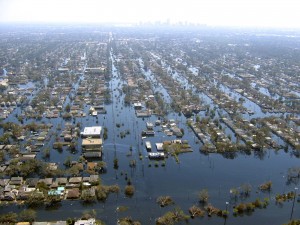Hurricane Preparedness
Hurricanes aren’t a rare thing: they can be deadly and destructive.
On average, five hurricanes strike the US coastline in a three year period. Two of these five are hurricane category 3 hurricanes (aka “intense”) and they kill approximately 50 to 100 people.
A hurricane is like a tornado in the fact that it’s a cycle, but it’s a tropical version. It is a low pressure system that incorporates thunderstorms, high-speed windows, and overall chaos.
You need to understand what the warnings mean for a hurricane. These alerts should come through via radio, news, or phones. They can be:
Tropical Storm Watch: This means the right conditions have been met that could possibly create a storm. It will specify the area, and the watch can last 48 hours.
Tropical Storm Warning: Tropical storm conditions of 39mph to 73mph are expected to be met in the next 36 hours. Have your emergency kit packed up and your hurricane safety plan on hand.
Hurricane Watch: The sustained winds of 74+ mph are expected. They try to give you a 48 hour warning beforehand. If possible, head inland with your most important documents and hurricane emergency kits with you. Let friends and family outside of your area know what you are doing.
Hurricane Warning: The 74+ mph winds have been met, and they expect a hurricane. They try to give it in advance. If you are in the specified location, try to head somewhere unaffected. Know where you friends and family are, and let them know where you are and where you are going.
The combination of high winds and flooding make hurricanes devastating. This is why it is important to keep up on hurricane preparation with supplies like first aid kits, food rations, and water purification supplies. Also consider having a crank-powered radio and flashlight. Many charge cell phones, too, so you can stay in touch with your family or friends.
You can never be completely prepared, but you can try. Make sure you won’t be left stranded if a hurricane heads your way.








